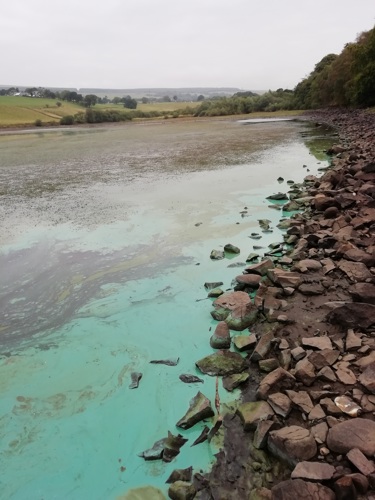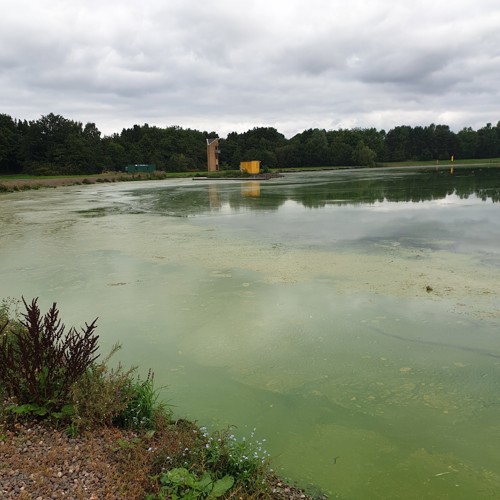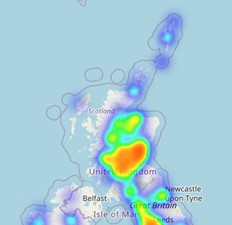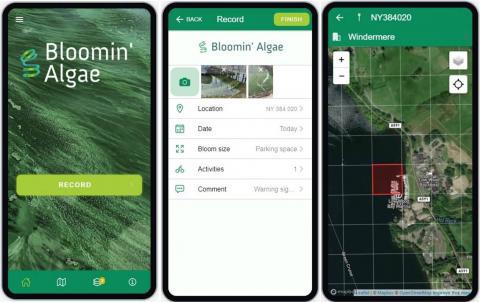Summers are becoming hotter and drier, with winter rainfall and storm frequency predicted to increase. These effects of climate change are ideal conditions to also give rise to increased incidence of algal and blue-green algal (cyanobacteria) blooms in Scottish freshwaters.
Jan Krokowski, Senior Specialist Scientist at SEPA
November 16, 2021
Cyanobacteria pose a health risk to water users, pets, and livestock due to toxins they can produce, and result in closure of water-based recreation at affected sites. Exposure to these cyanotoxins has adverse health effects on animal and human health, in some cases resulting in the death of a range of animals, pets, and livestock, and in rare cases humans.
There are many reports and incidents annually of dead or ill animals after coming into contact with potential toxic cyanobacteria. In most cases people who come into contact with toxic cyanobacterial blooms, scums and mats often report skin rashes, eye irritations, vomiting and diarrhoea, fever and pains in muscles and joints.
Sadly, in 2021 alone in Scotland there have been 3 dog mortalities associated with cyanobacterial blooms, and reports of illness in children. These are recurring annual incidents. Paddle boarding, wild swimming and wakeboarding water-based recreation are also on the increase in Scotland with potential increase of cyanobacterial risk to water users.
Typical cyanobacterial blooms and scums on the shore.

Banton Loch 2021

Strathclyde Loch September 2021
The Scottish Government have produced a document on assessment and minimisation of risks to public health from cyanobacteria. Cyanobacteria (Blue-Green Algae) in Inland and Inshore Waters: Assessment and Minimisation of Risks to Public Health following the World Health Organisation guidance. Working in partnership with other organisations the role of SEPA is defined to provide advice and assistance in analysis of ad-hoc samples from suspected cyanobacterial blooms in recreational waters. In past years SEPA have analysed between 300-500 samples annually for presence of potentially toxic cyanobacteria.
In 2021, Ecology Assessment Unit provided a robust and efficient service responding to just under 150 reports and dealing with over 70 lab analyses in the ASB and Aberdeen laboratories. We can expect requests for analysis work to increase as the effects of climate change lead to an increase in frequency and duration of cyanobacterial blooms, and an increase in water-based recreational activities.

Heat map highlighting the extent of cyanobacterial records across Scotland in 2021 (Bloomin’Algae).
To help provide a rapid and more comprehensive picture of harmful algal blooms in our areas, everyone can send in a potential record of an algal bloom using the citizen science Bloomin’Algae app. Recording incidents using the Bloomin’Algae app is quick and easy. This helps inform SEPA, local authority or landowner of potential public health risks, and if needed, to provide an early warning to the public. Bloomin’Algae is available from Google Play or App Store.

The app, which has been created by the UK Centre for Ecology & Hydrology, in collaboration with the Environment Agency, Scottish Environment Protection Agency, Public Health England and Health Protection Scotland, enables users to submit a photo of the bloom and state what activity takes place at the location, so that the potential risks to people and animals can be gauged.
All verified records can easily be viewed on the Bloomin' Algae interactive map.
Ecology Assessment Unit are investigating working towards providing an even more enhanced and robust monitoring and analytical service as effects of climate change lead to more cyanobacterial incidents, working closely in partnership with internal colleagues, as well as with external colleagues, including Local Authorities.
We are looking into combining all relevant data onto a single visual map, accessible by all, highlighting sites with cyanobacterial blooms where risks are therefore greatest. We are due to continue with the revision of the Scottish Guidance document on minimising risk to public health from cyanobacteria in readiness for 2023 following the updated World Health Organisation guidance. We are currently working in partnership within the main policy areas to coordinate research to evaluate and help mitigate climate change impacts on water quality in Scottish standing waters, and work on innovative techniques using satellites, DNA molecular methods, and developing toxicity testing to provide evidence-based data to help mitigate effects of climate change on cyanobacteria.
SEPA should be contacted directly to report environmental events and algal incidents including pollution on-line or calling the Pollution Hotline 0800 80 70 60. For further details please contact the local Ecology Assessment Unit or jan.krokowski@sepa.org.uk
Adobe Acrobat Reader is the free, trusted leader for reliably viewing, annotating and signing PDFs.
Download Adobe Acrobat Reader






